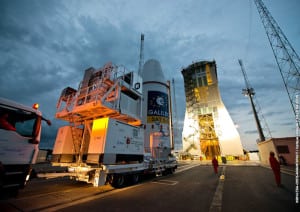Frozen Hydrazine Lines Linked to August 25 Fregat Launch Anomaly
[Via Satellite 10-08-2014] Independent inquiry boards established by Arianespace and Roscosmos have come to the same conclusion regarding the root cause of the Fregat anomaly that occurred 35 minutes into the Soyuz mission VS09. The culprit was found to be frozen hydrazine that was chilled by its proximity to cold helium feed lines within the Fregat upper stage. The frozen lines caused two attitude control thrusters to fail, resulting in subsequent inertial system behavior that left two uninsured Galileo navigation satellites in unintended orbits.
NPO Lavochkin, manufacturer of the Fregat has identified the same “thermal bridges” in other upper stages currently under construction. Corrective measures are being taken to eliminate the design ambiguity that resulted in this oversight.
Arianespace’s independent inquiry board has tasked NPO Lavochkin with revamping the system thermal analysis, correcting the design documents and modifying the documents associated with the manufacture, assembly, integration and inspection procedures of the supply lines.
“Since the corrective measures are easy to deploy by NPO Lavochkin, we are looking at the resumption of Soyuz launches from the Guiana Space Center, as early as December 2014,” said Stéphane Israël, chairman and CEO of Arianespace. “The resolution of this anomaly will enable a consolidation of the reliability of Fregat, which had experienced 45 consecutive successes until this mission.”
